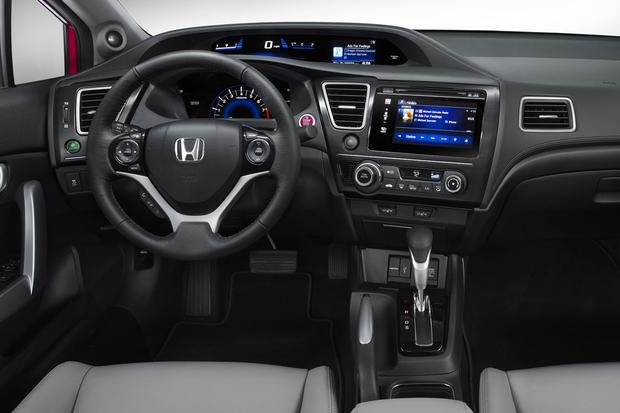Raizenkohakus
New Member
- 2
- 2

This is a DIY tutorial on how to build the seat heating harness for retrofitting OEM Leather Seats with lumbar adjustment.
This tutorial does not contain information on how to remove the seats or the centre console, there are plently on 9thcivic already
and quite frankly, it's 4 bolts and a few connectors, pretty straightforward.
I have not removed the centre console to install the harness as it takes too much time, I have inserted my harness through the radio hole in the dashboard
then pulled the wires down the centre console and then under the seat. It is NOT the way to do it
DISCLAIMER:
This is a complex DIY tutorial involving:
- interaction with very sensitive Supplementary Restraint System Components (Seat Airbags);
Careless interaction might result in your airbag being deployed.
Always disconnect battery 3-10minutes before attempting to disconnect the SRS connectors.
- You need at least basic knowledge of electrotechnics to understand what you're building here.
Google: Ohm's Law, Voltage Drop, Resistivity. -
These 3 basic pieces of information will help you understand why you need 1.5mm CSA / 16AWG wires from the 15A fuse to the seat relays.
Short answer: even if Honda can get away with 1.0mm CSA or even 0.75mm CSA,
you absolutely don't want to risk melting the wire and maybe creating a spark under your dash/seats so THICK is BETTER for PWR and GND.
- You need to have a rough idea on how to solder wires.
Following this DIY is your choice and yours only, you are the sole responsible should this DIY set your car on fire or worse.
By moving forward with the DIY you understand that no one else besides you is responsible should things go wrong.
TOOLS NEEDED:
1/4in drive ratchet
10mm socket
14mm socket
Phillips head screw driver
Flat head screw driver
Digital Multimeter
PARTS NEEDED:
-OEM Switches - This I could only find with the entire MK9 Heater Display
(I paid 40£ for mine)
-5x 1.5mm CSA / 16AWG wires 2m length each
(I have bought them from here)
-6x 0.35mm wires 2m length each
(I have bought them from here)
-4x eBay inline connectors
(Tyco Waterproof) (I have bought them from here)
-4x Piggyback Low-Profile Mini Fuse Tap
(I have bought them from here)
- TESA Wiring loom tape
(I have bought it from here)
- Eyelets 8mm,10mm and 13mm - see what works for you, I used 13mm for the seat bolt gnd and 8 or 10mm for the radio chassis bolt gnd.
(I have bought them from here)
- Electrical tape (found everywhere)
- Thermal contracting tube - nice to have.
- Mini low profile fuses. (Halfords?)
- Split Corrugated Tube 20mm internal diameter (haven't used yet, waiting to arrive)
THE CIRCUIT DIAGRAMS:
- I have provided both the OEM circuit diagrams and my own circuit diagrams which I have drawn to help me create the harness.
I have NOT followed the inline pin cavities nor the colours found in the circuit diagrams (OEM and Mine)
so please DO NOT associate the colours of the wires in the pictures with the ones in the diagrams, I had a very limited choice of colours.
- My circuit diagrams and the tutorial itself was created around the fact that I did not have the OEM plug-in connectors
so I had to re-solder new connectors on seats and solder the wiring straight to the switches.
(90% of the cases, you won't get the plug in connectors with the switches).
WARNING! - Some model years have the control wires for Relay LOW and Relay HIGH swapped between Passenger and Driver switch!
Make sure you check with a multimeter the Relay Low and Relay High switch pins before soldering anything!!!
My 2013 Honda did NOT have Low and High pins swapped on the switches. Pin 1 was low and pin 4 was High for both.
GROUNDING POINTS:
AGAIN, I DON'T RECOMMEND doing it the way I did!
- I've connected the 1.5mm CSA Ground for the seat heaters to one of the seat bolts after I've sanded the paint away.
Not the best engineering solution, Ideally if you can, bolt it to a ground in the centre console or maybe the seatbelt bolt this is hidden out of your hand's and foot's reach.
Or maybe one of the bots in the rear of the seat, I have used the ones in front but the wire is now visible and I'm looking to change that.
-The ground wire for the switches, you can use one of the 2 bolts which holds the radio in, that's a pretty good grounding point.
INSULATION:
TAKE EXTRA MEASURES TO INSULATE YOUR HARNESS!!!
Use the tesa tape above only after you've finished insulating the copper.
MAKE SURE YOU SOLDERED THE WIRES PROPERLY AND THEY ARE WELL BONDED TOGETHER!
(IMPERFECT SOLDERS CAUSES SPARKS, SPARKS CAUSE FIRES)
For example if you spliced 2 wires, you need to use electrical tape (a lot) to seal the splice before considering taping the harness
After you've finished with the electrical taping, then with the cotton taping you can use a split corrugated tube (20mm internal diameter minimum)
(electric sparks from an imperfect soldering + cotton tape is a fire hazard and you'll most likely set your car on fire if you mess this up)
Best of luck.
¬Ray.
Pictures list:
View: https://drive.google.com/open?id=1LT0LiBcsw_3MF9-LMhCY6y1gKhdGb2y6




